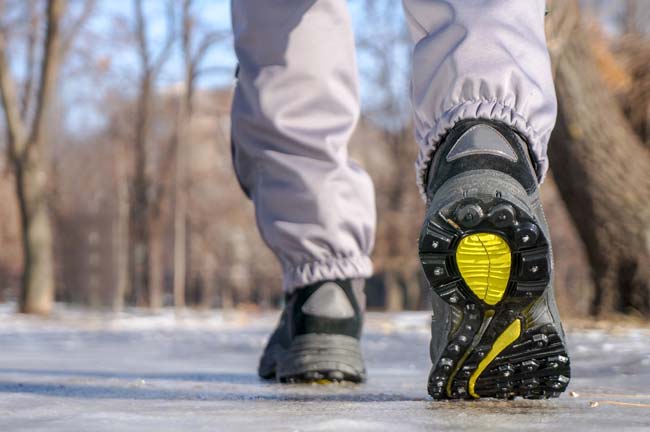A few months back, we wrote about the dangers of falls among seniors — and how to reduce the risk of falling. But did you know that simply being outdoors increases the risk of falls?
In fact, a study published last year found that 48 percent of falls among older adults (and up to 72 percent of those among younger adults) occur outdoors.
But why is that?
Let’s take a look at the unique challenges the outdoors present and how to lower the risk of falling outside.
Fall prevention: A look at outdoor falls
Outdoor falls are more common than indoor ones — as many as one-third of older adults fall outdoors once a year, with many suffering multiple falls.
Falls outdoors are caused by multiple factors, including uneven walking surfaces like sidewalks and driveways, fall hazards like curbs, poor outdoor lighting or, the opposite problem, glare from the sun, and inclement weather.
The last factor is a particular concern during the winter, when any type of precipitation combined with cold weather can lead to icy or slippery surfaces. Combine a slippery surface with an older adult who has difficulties with balance, and you have a recipe for falling.
The majority of falls outdoors are related to walking, and because there are fewer soft landing places, most falls result in a person landing on a hard surface like concrete, asphalt, stone or wood. Because of that, falls outdoors can result in serious injuries, like fractures and concussions.
Fall prevention: Lowering the risk of outdoor falls
So how can you prevent falls in yourself or an aging loved one when you’re headed outdoors? Many of the same principles for fall prevention apply whether you’re indoors or outdoors.
It’s a good idea for older adults to be seen regularly by both a primary care doctor and an eye doctor, who can gauge their overall health and vision. Making sure both are in optimal condition is a key part of preventing falls.
In addition, just like with the indoors, it’s important to take a careful look at the outdoor areas around your home to make sure they’re safe. This includes:
- Installing good lighting near stairs and walkways
- Adding “non-slip” materials where possible, including on walkways and stairs
- Keeping stairs, sidewalks, decks and porches clutter-free
- Installing handrails on stairs
- Removing protruding tree roots and other ground hazards
Beyond outdoor maintenance to help lower the risk of falls, there are also steps an older adult (and younger ones, for that matter) can take to minimize the risk. The biggest step you can take is to keep an eye on your path, looking for any potential hazards.
If an area of sidewalk or other path looks unsafe or slippery, walk in the grass instead. Be particularly aware of changes in elevation or terrain, and watch for holes or uneven areas.
It’s also important to check the height of curbs or stairs before stepping on them. It can be easy to misjudge, leading to a serious fall and even injury.
During winter weather events, be especially careful of slippery or icy surfaces. If ice or snow is expected, prepare surfaces around your home with kitty litter or ice melt to help you gain traction.
One other key way to prevent outdoor falls? Wear the right shoes. Be sure all shoes fit appropriately and contain soles that provide traction when walking. If you use a walking aid, like a cane, be sure it has the appropriate traction, too.
And one final tip: Don’t hurry. Take your time and walk slowly — you will get where you’re going and you’ll be much less likely to fall.
Regular checkups with a doctor are an essential part of any fall prevention plan. Need a doctor for yourself or a loved one? Find one here.







